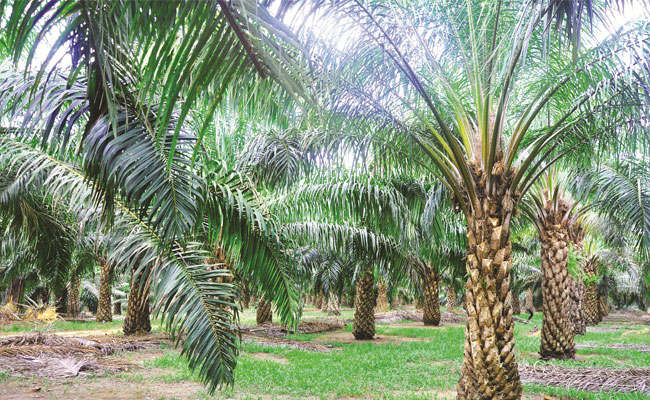Oil palm cultivation paving the way to a self-sufficient India

Palm oil is the most ubiquitous vegetable oil. Present in everything from soaps to ketchup, it is the mainstay of all manner of consumer products. India, as the world’s fifth largest consumer market and now the world’s most populous country, is unsurprisingly a major consumer of the commodity.
But it is still heavily reliant on imports to fuel its consumption demand.
India, in fact, is the world’s largest importer of palm oil. Over 90 percent of its palm oil demand is met through imports while domestic production covers just 2.7 percent of its needs. With this dependence on imports weighing on its exchequer and also leaving it vulnerable to supply chain disruptions, India is making a push to drastically boost domestic production and eventually become self-sufficient in meeting its palm oil demand.
The country is aiming to increase the area under oil palm cultivation to 10 lakh hectares by 2025-26 and then to 16.7 lakh hectares by 2029-30 with a particular focus on the North East and the Andaman and Nicobar Islands, as part of its National Mission on Edible Oils – Oil Palm (NMEO-OP). Its efforts will not only help India achieve self-sufficiency in palm oil production but, with oil palm cultivation more remunerative and less resource-intensive in comparison to crops like rice, it also promises to give farm incomes a much-needed boost.
But despite the obvious benefits of the push to increase domestic palm oil production, there is a big question that hangs over it – is it sustainable?
Oil palm cultivation over the years has acquired a reputation for causing damage to the environment. It has been blamed for widespread deforestation and the destruction of entire biospheres and ecosystems. But, while that may have held true once, palm oil cultivation today can be sustainable.
Oil palms require smaller amounts of pesticides and fertilizers than other vegetable oil crops. Additionally, plantations for instance, can be established on land that has already been degraded rather than on land needing to be deforested. In fact, palm oil producers can go further, planting trees elsewhere and therefore re-foresting entire tracts of land. In fact, meticulous land-use planning and the implementation of fine-scale local strategies for palm oil cultivation can reduce the pressure on high biodiversity landscapes.
At the same time, oil palm plantations, if established sustainably and responsibly, can act as carbon sinks. Far from their reputation of being ecologically destructive, they can in fact, play a crucial role in mitigating climate change. Twelve million hectares of oil palm plantations globally can sequester as many as 74 MT of carbon a year due to the crop’s high biomass productivity. With over two lakh hectares under oil palm cultivation in India alone, it’s easy to see how the crop can play a major role in the country’s decarbonisation push.
In this way, not only are they not razing forested land by setting up plantations on already degraded land, but they are in fact acting as drivers of climate change mitigation strategies.
India is aiming for its own domestic palm oil push to be just that – sustainable. But it is pushing to make it sustainable not just from an environment but also livelihood point of view. Farmers, for instance, will be encouraged to adopt intercropping, the practice of planting more than one crop on a piece of land.
Farmers can, therefore, grow crops like cocoa, red ginger, bush pepper, banana and ornamental crops alongside oil palms. Not only will this improve soil health but also open an additional revenue stream for them, especially during the initial four-year non-productive gestation period of oil palm cultivation.
The private sector is also stepping in – their approach to sustainable palm oil cultivation and procurement is aimed at the financial and economic viability of the business. They are encouraging farmers to adopt best practices to improve soil fertility and control degradation and erosion of soil.
There are several initiatives afoot to educate farmers and raise awareness about sustainable farming among them. This includes knowledge banks or knowledge centers that are being set up by private companies to provide farmers with a holistic package of information, tools, services and solutions. Such centers are working to empower farmers with information that will enable them to make the right decisions that will benefit the environment, their crop and their incomes as they venture into the palm oil business.
The momentum oil palm cultivation is gaining in India is undeniable. With the country focused on preserving all of the benefits of oil palm cultivation while mitigating its impact on the environment, the sector is on the cusp of a boom.
And it needs to be. India’s self-sufficiency depends on it.
Read also
Wheat in Southern Brazil Impacted by Dry Weather and Frosts
Oilseed Industry. Leaders and Strategies in the Times of a Great Change
Black Sea & Danube Region: Oilseed and Vegoil Markets Within Ongoing Transfor...
Serbia. The drought will cause extremely high losses for farmers this year
2023/24 Safrinha Corn in Brazil 91% Harvested
Write to us
Our manager will contact you soon



